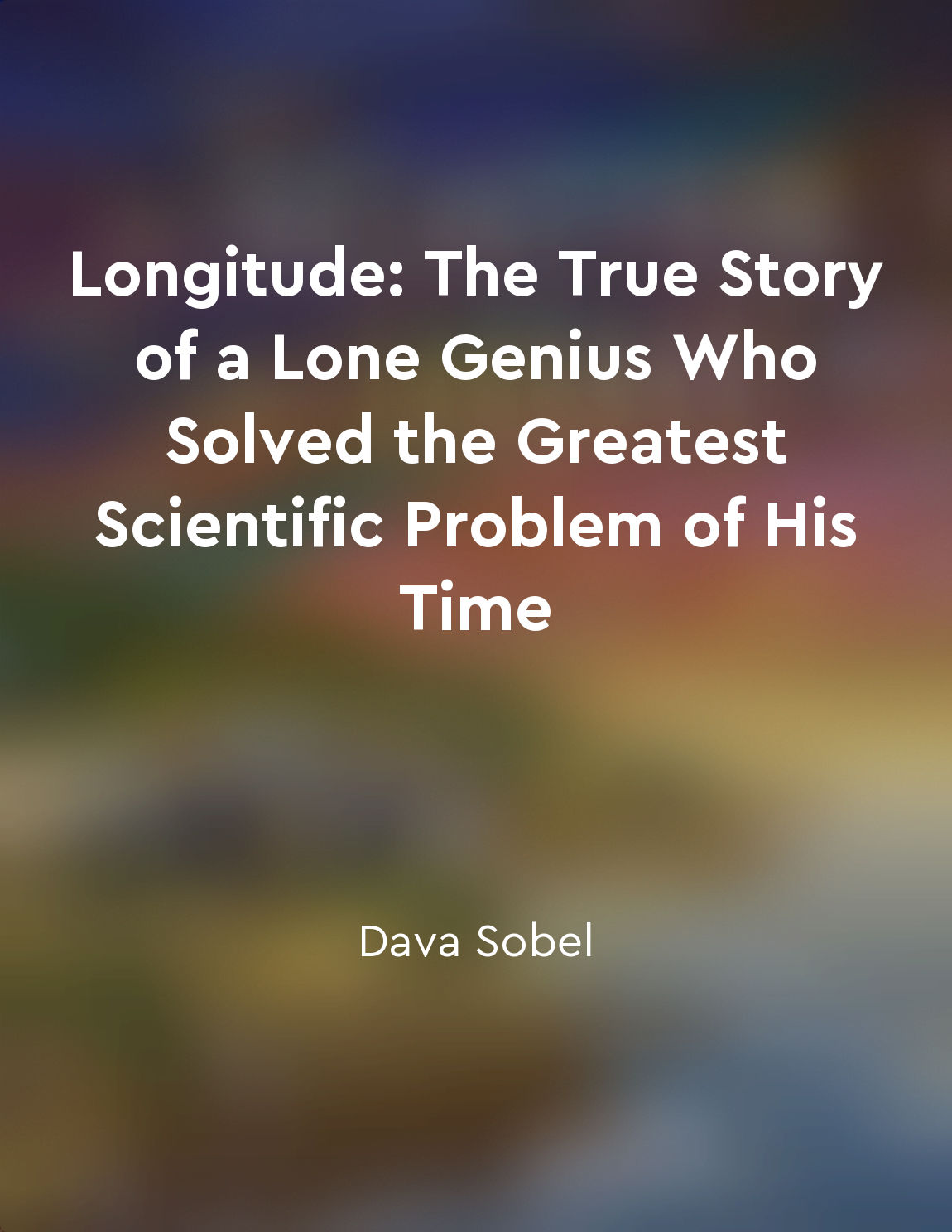Committee interference from "summary" of Longitude: The True Story of a Lone Genius Who Solved the Greatest Scientific Problem of His Time by Dava Sobel
In the great quest to solve the problem of determining longitude at sea, a major obstacle faced by innovators was the interference of committees. These committees, composed of esteemed members of the scientific and academic communities, often hindered progress by imposing their own opinions and disregarding the efforts of individual inventors. Rather than encouraging innovation and collaboration, committee interference stifled creativity and impeded the advancement of solutions to the longitude problem. The rigid adherence to established beliefs and methods by these committees limited the possibilities for new ideas to emerge and be tested. Committee interference also resulted in ...Similar Posts
Longitude was a matter of life and death for sailors
The determination of a ship's position at sea was a formidable challenge for sailors in the seventeenth and eighteenth centurie...
Others feared it would disrupt existing trade practices
The introduction of a standardized system of measurement was not universally embraced. While some saw it as a way to bring orde...
Academic politics in the scientific world
The scientific world is a place where ambition and competition can sometimes overshadow the pursuit of knowledge. Academic poli...
The longitude problem was a mystery that captivated the world
The longitude problem was an enigma that mesmerized the globe. It was a puzzle that confounded the greatest minds of the time. ...
Leadership played a critical role
At Bell Labs, the importance of leadership cannot be overstated. The success of the organization hinged on the guidance and vis...
The airpump symbolized the power of experimental science
The airpump, a technological device that was used by Robert Boyle in the 17th century to investigate the properties of air, pla...

Lasting impact on maritime history
The quest for an accurate method of determining longitude at sea was a problem that plagued sailors for centuries. Without a re...
Exploration has revealed the interconnectedness of the world
Throughout history, explorers have embarked on journeys to discover new lands, people, and cultures. These voyages have not onl...
The history of discovery is filled with tales of triumph and tragedy
Throughout human history, the pursuit of discovery has been marked by a series of remarkable victories and devastating setbacks...
